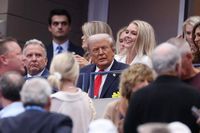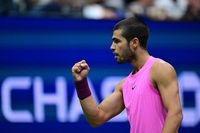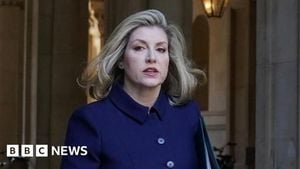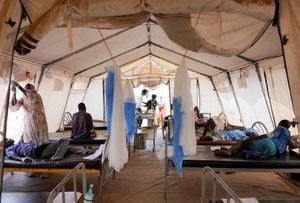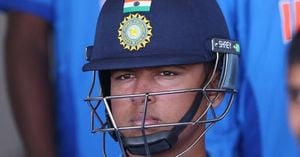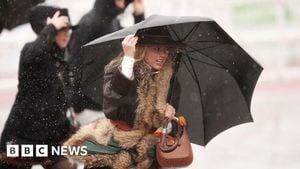On Sunday, September 7, 2025, President Donald Trump returned to his hometown of New York City for a high-profile appearance at the men’s final of the U.S. Open tennis tournament, held at Arthur Ashe Stadium in Queens. It was a historic visit—Trump became the first sitting president in 25 years to attend the U.S. Open final, according to multiple media outlets including BBC and HuffPost. Yet, the event quickly transformed into a microcosm of the nation’s divided political climate, as the crowd’s reaction ranged from enthusiastic cheers to thunderous boos, laying bare the polarization that has defined Trump’s presidency.
Heightened security measures surrounded Trump’s attendance, with the Secret Service coordinating with local authorities to ensure his safety. These precautions led to lengthy queues and a delayed start to the much-anticipated men’s singles final between Spain’s Carlos Alcaraz and Italy’s Jannik Sinner, as reported by The Guardian. Fans—some eager, some impatient—waited outside as security checks stretched on, setting an anxious tone for the afternoon.
When Trump entered the stadium, accompanied by his son-in-law Jared Kushner, granddaughter Arabella, White House chief of staff Susie Wiles, and press secretary Karoline Levitt, anticipation buzzed through the crowd. The audience, a mix of celebrities, athletes, power brokers, and everyday New Yorkers, was described by The Guardian as predominantly liberal. This was, after all, deep-blue New York City, a place where Trump’s brand of politics has historically faced resistance.
The first sign of controversy came during the performance of the national anthem. Trump’s image flashed across the Jumbotron, and the reaction was immediate—a mix of a few cheers but much louder, sustained booing echoed around the arena. According to HuffPost, the president smiled and clapped, seemingly unfazed, as a massive American flag was unfurled on the court. Attorney General Pam Bondi, envoy Steve Witkoff, and other members of Trump’s entourage appeared to share in the moment, but the mood in the stadium was unmistakably tense.
Organizers at the U.S. Tennis Association (USTA) had reportedly hoped to avoid any spectacle, instructing broadcasters to refrain from showing audience reactions to Trump’s appearance. A USTA spokesperson later told The Athletic that the organization regularly asks broadcasters “to refrain from showcasing off-court disruptions.” This decision, however, sparked accusations of censorship on social media and among some commentators. As HuffPost noted, American studies professor Kari J. Winter called the USTA’s reported efforts “anti-democratic,” “cowardly,” and “sycophantic,” arguing, “To attempt to censor that reality is a form of white-washing history while it is unfolding. It is a form of truth-denial and disinformation.”
Despite the organizers’ efforts, the crowd’s reaction could not be contained. Later in the match, Trump was again shown on the Jumbotron, this time for a full 30 seconds. The response was even more pronounced—thunderous boos, punctuated by occasional cheers and clapping. The Associated Press reported that the jeers were “audible and sustained,” creating an atmosphere that was both electric and fraught with tension.
The White House communications team was quick to respond. The administration’s official X (formerly Twitter) account pushed back against media reports of booing, stating, “All these Fake News Losers do is lie because their pea-sized brains have been irreversibly destroyed by [Trump Derangement Syndrome].” The account added, “This is how it aired on TV. Note the cheers.” However, as the match continued and the booing persisted, the White House’s rapid response faded into the background, unable to drown out the reality inside the stadium.
Throughout the event, Trump maintained a public posture of good humor. Cameras caught him giving thumbs up and waving to tennis fans passing his box, even signing a few visors and baseball caps tossed his way. He laughed and joked with his team, including Bondi, Witkoff, and Wiles, seemingly brushing off the negative reception. Back in Washington after the match, Trump told reporters that the New York crowd had treated him “nicely,” focusing on the positive aspects of his visit.
Yet, the significance of the crowd’s reaction was not lost on observers. Professor Winter told HuffPost, “Freedom of expression is the essence and foundation of democracy. Our right to voice our opinions is enshrined in the First Amendment of the U.S. Constitution.” She added, “The booing makes people happy because it demonstrates how many of their fellow Americans share their dismay at what is happening in the U.S.” For some, the moment was a powerful display of public resistance to Trump’s policies and rhetoric, especially in a city that has often found itself at odds with the president’s agenda.
Polling continues to suggest that a majority of Americans disapprove of Trump’s job performance during his second term. As HuffPost reported, many on social media celebrated the audible boos, interpreting them as a sign that “America is catching on.” Others pointed out that the incident underscored the widening gulf between Trump’s supporters and detractors, with each side seeing what they wanted to see in the spectacle.
The match itself, though delayed, delivered its own drama. Spaniard Carlos Alcaraz defeated Italian Jannik Sinner in four thrilling sets, capping off a memorable afternoon of tennis. Notably, Trump did not present the trophy to the winner—a departure from his previous appearances at high-profile sporting events, and perhaps a tacit acknowledgment of the crowd’s chilly reception.
Before the match, Trump had appeared in the press cabin of Air Force One, excitedly remarking about a flyover of Citi Field and the U.S. Open grounds. As he boarded an SUV in New York, he grinned and told members of the media to “have a good time at the final.” But as the day unfolded, it became clear that the spotlight, for once, was not entirely his to command.
For Trump, the U.S. Open was both a homecoming and a reminder of the deep divisions that continue to shape American public life. The mixed reception—cheers, boos, and everything in between—offered a raw, unscripted snapshot of a nation still wrestling with its identity and its politics. And as the echoes of the crowd faded into the New York night, the questions raised by Trump’s visit lingered, unresolved but impossible to ignore.
